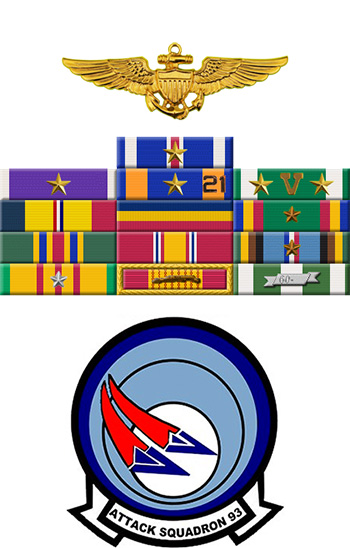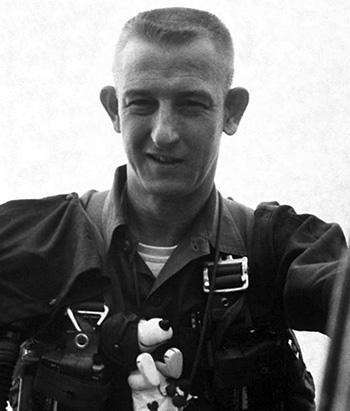
|
Charles E. Barnett |
 |
|||
| Rank, Service | ||||
Commander O-5, U.S. Navy |
||||
| Veteran of: | ||||
|
||||
| Tribute: | ||||
Charlie Barnett was born on January 18, 1935, in Eudora, Mississippi. He was commissioned an Ensign in the U.S. Navy through the Navy ROTC program at the University of Illinois on June 16, 1956, and after receiving his designation as a Naval Aviator, he flew AD-7 Skyraiders with VA-95 at NAS Alameda, California, until attending Naval Postgraduate School at Monterey, California, from July 1962 to August 1963. His next assignment was as an instructor with the Navy ROTC detachment at the University of Illinois from August 1963 to June 1965, followed by A-4 Skyhawk Replacement Air Group training. LCDR Barnett then served as an A-4 pilot with VA-195 at NAS Lemoore, California, and deployed to Southeast Asia with his unit aboard the aircraft carrier USS Ticonderoga (CVA-14) from October 1966 to May 1967. During this time, he was forced to eject from his stricken A-4 and was rescued on December 13, 1966. His next assignment was as an instructor at the U.S. Naval Academy from September 1968 to July 1970, followed by A-7 Corsair II Replacement Air Group training from August 1970 to June 1971. CDR Barnett served as an A-7 pilot with VA-93 at NAS Lemoore and deployed aboard the aircraft carrier USS Midway (CVA-41) from June 1971 until he was killed in action on May 23, 1972. He was officially listed as Missing in Action until being declared dead on June 16, 1975. His remains were returned to the United States on November 3, 1988, and he was buried at Arlington National Cemetery. |
||||
|
||||

